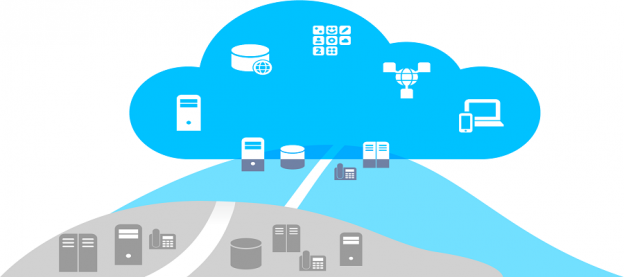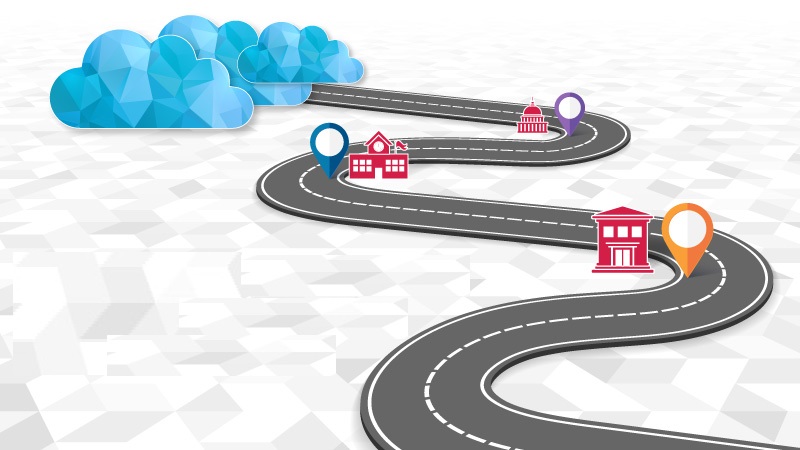Whatever may be you existing IT ecosystem or your organization’s future plans for cloud adoption, you can chose from a wide array of approaches to realize your cloud migration dream.
Needless to mention, you should tread with caution throughout the process of cloud migration by understanding that it is not mandatory to shift all IT infrastructure to cloud. In short, you must enjoy the journey to cloud by adopting a step by step approach.
It is also possible and advisable to follow a hybrid approach to cloud migration that allows you to retain control of the most sensitive infrastructure within the four walls of your organization. In this post, let us briefly review the most sought after cloud migration approaches.
Retiring the obsolete applications
The very first step towards cloud migration is to understand the extent of obsolete legacy applications that may never be used in future. In any organization there are at least two out of ten applications that are not going to be used anymore. Is In order to discover the usage patterns of different applications, one must revisit the entire gamut of IT portfolio as well as the statistics of metering. This can provide an in-depth understanding of applications that need to be retired in order to achieve a leaner and more cost effective IT environment. In fact, one can also distribute resources that can be freed up by retiring outdated applications including security arrangements.
If you are contemplating a large volume migration, then re-hosting or lift and shift approach can be a viable solution for you. It is backed by cost efficiency as well as ease of implementing cloud specific architectures in a highly optimized manner. According to some observers, a company can reduce migration expenditure at least by thirty percent.
This is considered as the quickest and also the easiest way to migrate data center to the cloud. The strategy of lifting and shifting is also known as re-hosting since it involves redeployment of applications to cloud native hardware ecosystem followed by implementation of relevant changes to the host configuration of the application.
In order to enhance appeal of the lift and shift strategy, Amazon Web Services have introduced tools that automate import and export of applications to obviate manual efforts. In spite of this, a manual process of re-hosting guarantees an enriched learning experience of re-deployment. Both approaches are designed to make your applications perform in the cloud environment.
Leveraging provider’s infrastructure
For optimization of applications in connection with cloud a re-platform solution can be an ideal alternative as it allows applications to run on the infrastructure offered by a cloud hosting service provider. It should be noted that there is neither any change in core architecture of application nor does it require spending developer cycle.
On the flip side, a re-platform strategy suffers from the considerable infancy of the market of Platform as a Service. The PaaS solutions fall short of delivering capabilities that many developers are familiar with in the environment of existing platforms.
In a re-platform option, one can use common resources over and over again. This can also include development framework, traditional programming languages and the current caches associated with the vital code of enterprise.
Re-imagine the architectural development
The strategy is also popularly known as refactoring since it is designed to accommodate higher scale or extra features that would support growing business requirements. Refactoring leads to greater performance of applications in a cloud environment since this would be next to impossible in a traditional setup of on-site infrastructure. Applications are re-architected to gain seamless compatibility with cloud ecosystem by making smart use of Platform as a Service.
Service providers are found to enable state of the art tools to developers through a user friendly platform. Whenever an application is refactored, it loses the legacy code apart from the known environment of development framework.
Repurchase as a strategy
Thanks to the extensive availability of commercially developed software applications that are designed to substitute traditional platforms as well as applications, one can implement repurchasing as a strategy of cloud adoption. When any organization is planning to procure SalesForce or any other software package, it is actually going to repurchase application because one or more business functions. The enterprise can easily migrate to any appropriate Software as a Service platform by following the repurchasing option. However there are few drawbacks of the strategy including vendor lock in. Some of the SaaS products can also result in interoperability problems.
Takeaway
Cloud migration strategy of any organization needs to be driven by individual requirements and business objectives instead of an urge to join the cloud bandwagon. It should also encompass the existing portfolio of IT applications because the migration process may also have a deep impact on your onsite IT infrastructure. Cloud adoption allows organizations to revisit and evaluate the existing IT portfolio to get rid of the inefficiencies.






 Live Chat
Live Chat

